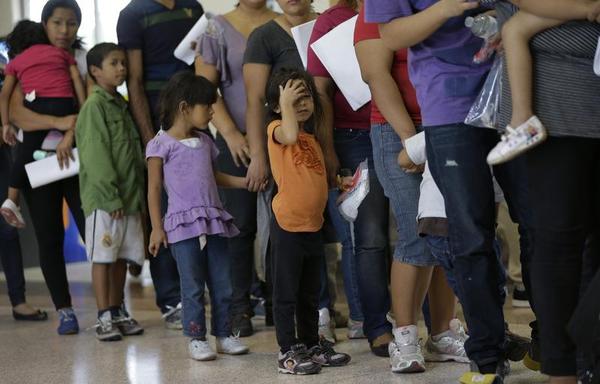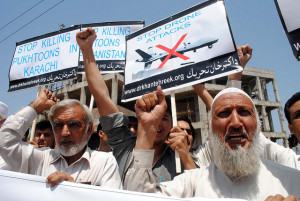by Rebecca Gordon
It’s hard to believe that more than four years have passed since the police shot Amílcar Pérez-López a few blocks from my house in San Francisco’s Mission District. He was an immigrant, 20 years old, and his remittances were the sole support for his mother and siblings in Guatemala. On February 26, 2015, two undercover police officers shot him six times in the back, although they would claim he’d been running toward them with an upraised butcher knife.
For two years, members of my little Episcopal church joined other neighbors in a weekly evening vigil outside the Mission police station, demanding that the district attorney bring charges against the men who killed Amílcar. When the medical examiner’s office continued to drag its feet on releasing its report, we helped arrange for a private autopsy, which revealed what witnesses had already reported — that he had indeed been running away from those officers when they shot him. In the end, the San Francisco district attorney declined to prosecute the police for the killing, although the city did reach a financial settlement with his family back in Guatemala.
Still, this isn’t really an article about Amílcar, but about why he — like so many hundreds of thousands of Guatemalans, Hondurans, and El Salvadorans in similar situations — was in the United States in the first place. It’s about what drove 225,570 of them to be apprehended by the U.S. Border Patrol in 2018 and 132,887 of them to be picked up at or near the border in a single month — May — of this year. As Dara Lind observed at Vox, “This isn’t a manufactured crisis, or a politically engineered one, as some Democrats and progressives have argued.”
It is indeed a real crisis, not something the Trump administration simply cooked up to justify building the president’s wall. But it is also absolutely a manufactured crisis, one that should be stamped with the label “made in the U.S.A.” thanks to decades of Washington’s interventions in Central American affairs. Its origins go back at least to 1954 when the CIA overthrew the elected Guatemalan government of Jacobo Arbenz. In the 1960s, dictatorships would flourish in that country (and elsewhere in the region) with U.S. economic and military backing.
When, in the 1970s and 1980s, Central Americans began to rise up in response, Washington’s support for right-wing military regimes and death squads, in Honduras and El Salvador in particular, drove thousands of the inhabitants of those countries to migrate here, where their children were recruited into the very U.S. gangs now devastating their countries. In Guatemala, the U.S. supported successive regimes in genocidal wars on its indigenous Mayan majority. To top it off, climate change, which the United States has done the most of any nation to cause (and perhaps the least to forestall or mitigate), has made subsistence agriculture increasingly difficult to sustain in many parts of Central America.
U.S. Actions Have Central American Consequences
Scholars who study migration speak of two key explanations for why human beings leave their homes and migrate: “pull” and “push” factors. Pull factors would include the attractions of a new place, like economic and educational opportunities, religious and political liberties, and the presence there of family, friends, or community members from back home. Push factors driving people from their homes would include war; the drug trade; political, communal, or sexual violence; famine and drought; environmental degradation and climate change; and ordinary, soul-eating poverty.
International law mandates that some, but not all, push factors can confer “refugee” status on migrants, entitling them to seek asylum in other countries. This area of humanitarian law dates from the end of World War II, a time when millions of Europeans were displaced, forcing the world to adjust to huge flows of humanity. The 1951 Geneva Convention defines a refugee as anyone who has
“a well-founded fear of being persecuted for reasons of race, religion, nationality, membership of a particular social group or political opinion, is outside the country of his nationality and is unable or, owing to such fear, is unwilling to avail himself of the protection of that country…”
Almost three-quarters of a century later, that legal definition still theoretically underlies U.S. policy toward refugees, but this country has always welcomed some refugees and not others. In the 1980s, for instance, Salvadorans fleeing U.S.-supported death squads had almost no hope of getting asylum here. On the other hand, people leaving the communist island of Cuba had only to put a foot on U.S. territory to receive almost automatic asylum.
Because of its origins in post-war Europe, asylum law has a blind spot when it comes to a number of forces now pushing people to leave their homes. It’s unfortunate that international law makes a distinction, for instance, between people who become refugees because of physical violence and those who do so because of economic violence. A well-founded fear of being shot, beaten, or raped may get you asylum. Actual starvation won’t.
Today, a number of push factors are driving Central Americans from their homes, especially (once again) in Guatemala, Honduras, and El Salvador. Key among them are political corruption and repression, the power of the drug cartels, and climate change — all factors that, in significant ways, can be traced back to actions of the United States.
According to World Bank figures, in 2016 (the latest year available), El Salvador had the highest murder rate in the world, 83 homicides per 100,000 inhabitants. Honduras took second place with 57 per 100,000, while tenth place went to Guatemala, with 27. Mexico wasn’t far behind with 19. (By comparison, with 5.3 per 100,000, the United States was far down the list.)
By any measure, the three Central American nations of what’s sometimes called “the Northern Triangle” are dangerous places to live. Here’s why.
Political repression and violent corruption: Honduras, for example, has long been one of Central America’s poorest and economically most unequal countries. In the 1980s, the United States supported a military-run government there that routinely “disappeared” and tortured its opponents, while the CIA used the country as a training ground for the Contras it backed,who were then fighting the Sandinistas across the border in Nicaragua (who had recently deposed their own U.S.-backed dictator).
By the turn of this century, however, things were changing in Honduras. In 2006, José Manuel Zelaya became president. Although he’d run on a conservative platform, he promptly launched a program of economic and political reforms. These included free public education, an increased minimum wage, low-interest loans for small farmers, the inclusion of domestic workers in the social security system, and a number of important environmental regulations.
In 2009, however, a military coup deposed Zelaya, installing Porfirio Lobo in his place. Four of the six officers who staged the coup were graduates of the U.S.’s notorious School of the Americas, where for decades Latin American military officers and police were trained in the ways of repression and torture.
Washington may not have initiated the coup, but within days Secretary of State Hillary Clinton had given it her seal of approval, supporting that power grab in defiance of the Organization of American States. Since then, murder rates have skyrocketed, while corruption and drug trafficking have flourished as the drug cartels and local governing bodies as well as the national government melded into a single countrywide nightmare. In a recent New York Times report, for instance, Sonia Nazario detailed what this has meant just for public transportation where anyone who operates a taxi or a bus must pay a daily tax (double on special days like Christmas) amounting to 30% to 40% of the driver’s income. But this isn’t a government tax. It goes to MS-13, the 18th Street gang (both of which arose in the United States), or sometimes both. The alternative, as Nazario reports, is death:
“Since 2010, more than 1,500 Hondurans working in transportation have been murdered — shot, strangled, cuffed to the steering wheel and burned alive while their buses are torched. If anyone on a bus route stops paying, gangs kill a driver — any driver — to send a message.”
The police, despite having all the facts, do next to nothing. Violence and corruption have only become more intense under Honduras’s current president, Juan Orlando Hernández, who returned to office in what was probably a stolen election in 2017. Although the Organization of American States called for a redo, the Trump administration hastily recognized Hernández and life in Honduras continued on its murderous course.
The drug business: Along with coups and Coca-Cola, Mara Salvatrucha, or MS-13, is another U.S. import to Central America. Although Donald Trump likes to cast most refugees as dark and dangerous gang members from south of the border, MS-13 had its roots in Los Angeles, California, among Salvadorans who had fled the U.S.-backed dictatorships of the 1970s and 1980s. When young people who grew up in Los Angeles returned to El Salvador at the end of that country’s civil war, MS-13 went with them. What had begun as a neighborhood street gang created to protect Salvadoran youth from other gangs in that city has now grown into a vast criminal enterprise of its own — as has the 18th Street gang, or Calle 18, which also came out of Los Angeles, following a similar path.
Without a major market for their product, drug cartels would have vastly less power. And we all know where that market lies: right here in the United States. Fifty years of this country’s “war on drugs” turn out to have provided the perfect breeding ground for violent outlaw drug cartels, while filling our own jails and prisons with more inmates than any other country holds. Yet it has done next to nothing to stanch addiction in this country. These days, if they remain in their own lands, many young people in the Northern Triangle face a stark choice between joining a gang and death. Not surprisingly, some of them opt to risk the trip to the U.S. instead. Many could have stayed home if it weren’t for the drug market in this country.
Climate Change and Environmental Degradation: Even if there were no corrupt regimes, no government repression, and no drug wars, people would still be fleeing Central America because climate change has made their way of life impossible. As what the New York Times calls the biggest carbon polluter in history, the United States bears much of the responsibility for crop failures there. The Northern Triangle has long been subject to periods of drought and flooding as part of a natural alternation of the El Niño and La Niña phenomena in the Pacific Ocean. But climate change has prolonged and deepened those periods of drought, forcing many peasants to abandon their subsistence farms. Some in Guatemala are now facing not just economic hardship but actual starvation thanks to a heating planet.
All along a drought corridor that runs from Nicaragua through Guatemala, the problem is a simple lack of water. The Guardian’s Nina Lakhani reports that, in El Salvador, many people now spend their days in search of enough water to keep their families alive. Even where (unsafe) river water is available, the price — in money or sex — extracted by the gangs for using it is often too high for most women to pay, so they are forced to rely on distant municipal taps (if they even exist). While El Salvadorans live with strict water rationing, the U.S.-based multinational Coca Cola remains immune to such rules. That company continues to take all the water it needs to produce and sell its fizzy concoction locally, while pouring foul-smelling effluvia into nearby rivers.
In Honduras, on the other hand, the problem is often too much water, as rising sea levels eat away at both its Atlantic and Pacific coasts, devouring poor people’s homes and small businesses in the process. Here, too, a human-fueled problem is exacerbated by greed in the form of shrimp farming, which decimates coastal mangrove trees that normally help to keep those lands from eroding. Shrimp, the most popular seafood in the United States, comes mostly from Southeast Asia and — you guessed it — Central America. Whether it’s shrimp or drugs, the point is that U.S. desires continue to drive devastation in Central America.
As the Trump administration does everything it can to accelerate and deepen the climate crisis, Central Americans are literally dying from it. Under international law, however, if they head for the U.S. in an attempt to save their lives and livelihoods, they don’t qualify as refugees because they are fleeing not physical but economic violence and so are not eligible for asylum.
No Asylum for You
These days, even immigrants with a well-founded fear of persecution who perfectly fit the Geneva Convention’s definition of “refugee” may no longer get asylum here. The Trump administration doesn’t even want to offer them a chance to apply for it. The president has, of course, called such groups of migrants, traveling together for safety and solidarity, an “invasion” of “very bad people.” And his administration continues to take a variety of concrete steps to prevent non-white refugees of just about any sort from reaching U.S. territory to make such a claim.
His early efforts to deter asylum seekers involved the infamous family-separation policy, in which children who arrived at the border were taken from their parents in an effort to create the sort of publicity that would keep others from coming. An international outcry — and a federal court order — brought an official end to that policy in June 2018. At the time, the government was ordered to return such children to their parents.
As it happened, the Department of Homeland Security proved largely incapable of doing so, because quite often it hadn’t kept decent records of the parents’ names or locations. In response to an ACLU lawsuit listing 2,700 individual children living without their families in this country, the administration acknowledged that, in addition to named children, thousands more fell into that category, lost in what can only laughingly be called “the system.”
You might think that, if the goal were to keep people from leaving their homes in the first place, the Trump administration would do what it could to improve life in the Northern Triangle. If so, however, you would be wrong. Far from increasing humanitarian aid to El Salvador, Honduras, and Guatemala, the administration promptly slashed those funds, ensuring yet more misery and undoubtedly forcing yet more to flee Central America.
Its most recent ploy: to require refugees to apply for asylum in the first country they come to after leaving their own. Because Guatemala lies between Mexico and the rest of the Northern Triangle, that means Salvadorans and Hondurans will officially have to apply there first. President Trump even used the threat of new tariffs against Guatemalan goods to negotiate such an agreement with that country’s outgoing president Jimmy Morales to secretly designate his nation a “safe third country” where migrants could apply for asylum.
There is something more than a little ironic in this, given that the Guatemalan government can’t even offer its own people anything like safety. Significant numbers of them have, of course, been fleeing to Mexico and heading for the U.S. border. Trump’s solution to that problem has been to use the threat of tariffs to force Mexico to militarize its own border with Guatemala, in the process frustrating the new administration of president Andres Manuel López Obrador.
On August 1st, a federal judge in San Francisco issued an injunction against that “safe third country” policy, prohibiting its use for the time being. For now (at least theoretically), migrants from the Northern Triangle should still be able to apply for asylum in the U.S. The administration will certainly fight the injunction in the courts, while doing everything in its power to stop those immigrants in any way it can.
Meanwhile, it has come up with yet another way to prevent people from claiming asylum. Historically, family members of those persecuted in their own countries have been eligible to apply, too. At the end of July, Attorney General William Barr announced that “immigrants fearing persecution because of threats against their family members are no longer eligible for asylum.” This is particularly cruel because, to extort cooperation from their targets, drug gangs routinely make — and carry out — threats of rape and murder against family members.
A Real Crisis
There is indeed a real crisis at the U.S.-Mexico border. Hundreds of thousands of people like Amílcar are arriving there seeking refuge from dangers that were, to a significant degree, created by and are now being intensified by the United States. But Donald Trump would rather demonize desperate people than deploy the resources needed to attend to their claims in a timely way — or in any way at all.
It’s time to recognize that the American way of life — our cars and comforts, our shrimp and coffee, our ignorance about our government’s actions in our regional “backyard” — has created this crisis. It should be (but in the age of Trump won’t be) our responsibility to solve it.
Rebecca Gordon, a TomDispatch regular, teaches at the University of San Francisco. She is the author of American Nuremberg: The U.S. Officials Who Should Stand Trial for Post-9/11 War Crimes. Her previous books include Mainstreaming Torture: Ethical Approaches in the Post-9/11 United States and Letters from Nicaragua. Republished, with permission from TomDispatch.





